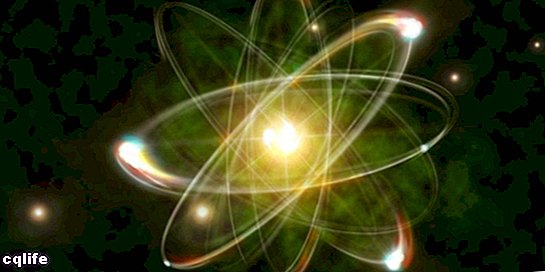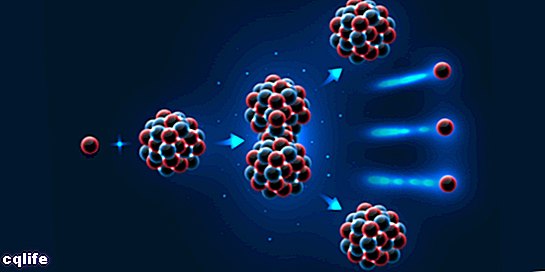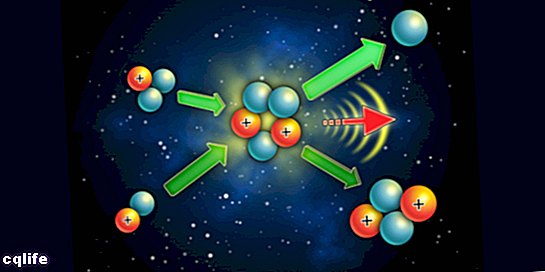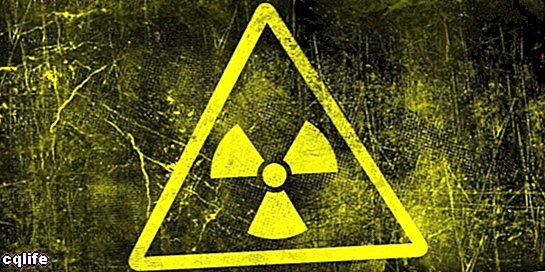- What is the nuclear energy?
- How is nuclear energy obtained?
- What is nuclear energy for?
- Advantages of nuclear energy
- Disadvantages of nuclear energy
- Characteristics of nuclear energy
- Examples of nuclear energy
We explain what nuclear energy is and how it is obtained. Also, what it is for, advantages, disadvantages and some examples.
Atomic energy is safe, quite efficient and versatile.What is the nuclear energy?
Nuclear energy or atomic energy is the result of the reactions that occur in the atomic nuclei or between them, that is, it is the energy released in nuclear reactions. These reactions can occur spontaneously or artificially.
Nuclear reactions are processes of combination or fragmentation of the nuclei of atoms Y subatomic particles. Atomic nuclei can combine or fragment, releasing or absorbing large amounts of energy in the process. When nuclei fragment, the process is known as nuclear fission, and when they combine it is called nuclear fusion.
Nuclear fission occurs when a heavy atomic nucleus is fragmented into several nuclei of smaller weight, being able to also produce free neutrons, photons and fragments of the nucleus. Nuclear fusion occurs when several atomic nuclei with similar charges combine to form a new, heavier nucleus. These reactions occur in the nuclei of the atoms of certain isotopes of chemical elements like uranium (U) or hydrogen (H).
The large amount of energy involved in nuclear reactions is fundamentally due to the fact that part of the mass of the reacting particles is converted into energy directly. This process was argued by the German physicist Albert Einstein by posing his equation:
E = mc²
Where:
- AND: Energy
- m: mass
- c: speed of light
As you can see, the equation proposed by Einstein relates mass and energy.
The energy released in nuclear reactions can be used to generate electricity in thermonuclear power plants, in nuclear medicine, in industry, in mining, in archeology and in many other applications.
Its main use is in the generation of electric power, where nuclear energy is used to heat large volumes from Water or to generate gases, whose caloric energy it is then used to drive large turbines that produce electricity.
The controlled use of nuclear energy is used for charitable purposes. It is a very important source of energy but also, unfortunately, it is used for military purposes for the production of nuclear weapons of mass destruction.
How is nuclear energy obtained?

Nuclear energy is obtained as a result of the nuclear reaction in certain atomic nuclei of certain chemical elements. Some of the most important processes to obtain nuclear energy are the fission of the isotope uranium-235 (235U) of the element uranium (U) and the fusion of the isotopes deuterium-tritium (2H-3H) of the element hydrogen (H), although also Nuclear energy can be obtained from nuclear reactions in the isotopes thorium-232 (232Th), plutonium-239 (239Pu), strontium-90 (90Sr) or polonium-210 (210Po).
The fission of uranium-235 (235U) is an exothermic reaction, that is, it releases a lot of energy. The released energy heats the medium in which the reaction is taking place, which could be water, for example.
For fission to occur, the 235U isotope is bombarded with neutrons free (although it can also be bombarded with protons, other nuclei or gamma rays) whose speed is very controlled. In this way, a free neutron can be absorbed by the nucleus, causing it to destabilize and fragment, and generate other smaller nuclei, free neutrons, other subatomic particles, and large amounts of energy. It is important to control the speed of the neutrons because if it is very high they could simply collide with or pass through the nucleus, and they would not be absorbed to produce fission.

The particles generated as a result of the fission of a nucleus, can in turn be absorbed by other neighboring nuclei, which will also be fission, and the particles that are generated as a result of this other fission, may, again, be absorbed by other nuclei , and so on, producing what is known as: Chain reaction.
Controlled nuclear chain reactions have many beneficial applications, as mentioned above. However, when the chain reaction is uncontrolled, it continues until there is no more material to fission, which occurs in a short time. This uncontrolled process is the beginning of the operation of the atomic bombs dropped by the United States on Japan in the WWII.
On the other hand, the fusion of the deuterium-tritium pair (2H-3H) is the simplest nuclear fusion process that exists. For this fusion to occur, it is necessary to bring two protons closer together (one from 2H and the other from 3H) so that the forces of strong nuclear interaction (forces that unite nucleons, that is, protons and neutrons, and which must overcome the repulsion force between protons, since they have the same charge) exceed the electrostatic interaction forces, since protons have a positive charge, so they tend to repel each other. To achieve this, certain pressures and decompressions are applied, as well as temperatures very specific. This fusion process produces a 4He nucleus, a neutron, and a large amount of energy.

Nuclear fusion is a process that occurs spontaneously in stars, for example, the Sun, but which has also been generated artificially.
In general, nuclear reactions produce unstable atoms, which, to stabilize themselves, emit excess energy to the environment for a specified time. This emitted energy is called ionizing radiation, which has enough energy to ionize the matter around it, which is why radiation is extremely dangerous to all life forms.
What is nuclear energy for?
The peaceful uses of nuclear energy are numerous, not only for the generation of electricity (which is already of enormous importance in today's industrialized world) but also for the production of usable and retractable heat energy, or of mechanical energy, and even forms of ionizing radiation that can be used to sterilize medical or surgical material. It is also used to power vehicles, such as atomic submarines.
Advantages of nuclear energy
The advantages of nuclear energy are:
- Little polluting. As long as there are no accidents and radioactive waste is properly disposed of, nuclear power plants pollute the environment less than burning fossil fuels.
- Safe. As long as the requirements of security, nuclear power can be reliable, consistent, and clean.
- Efficient. The amounts of energy released by these types of nuclear reactions are massive compared to the amount of raw material they demand.
- Versatile. The application of radiation and other forms of nuclear energy in various areas of human knowledge, such as medicine, are important.
Disadvantages of nuclear energy

The disadvantages of nuclear power are:
- Risky In cases of accidents, such as the one that occurred with the Chernobyl nuclear reactor in the former Soviet Union, the civilian population and even animal life are at high risk of radioactive contamination.
- Disposal. Radioactive by-products from nuclear power plants are difficult to handle and some have a very long half-life (the time it takes for a radioactive atom to disintegrate).
- Expensive The creation of nuclear power plants and the use of this technology it is usually very expensive.
Characteristics of nuclear energy
Broadly speaking, nuclear energy is powerful, efficient, a true achievement of human mastery over physics. However, it is also a risky technology: after seeing the disasters caused by the atomic bombs in Hiroshima and Nagasaki, or the Chernobyl accident in the USSR, it is known that this type of technology represents a real danger to life on the planet. as we know it.
Examples of nuclear energy
A peaceful example of the use of this energy is any nuclear power plant, such as the one in Ikata, in Japan. An example of its warlike use was the bombardment of the cities Japanese women from Hiroshima and Nagasaki in 1945 during World War II.
